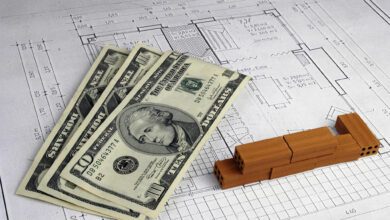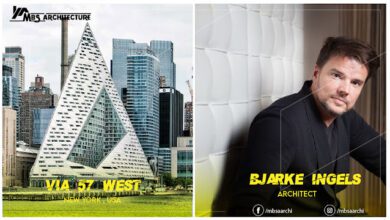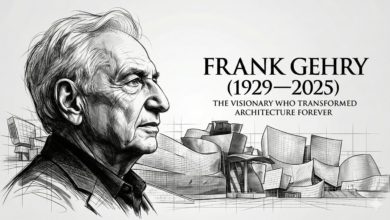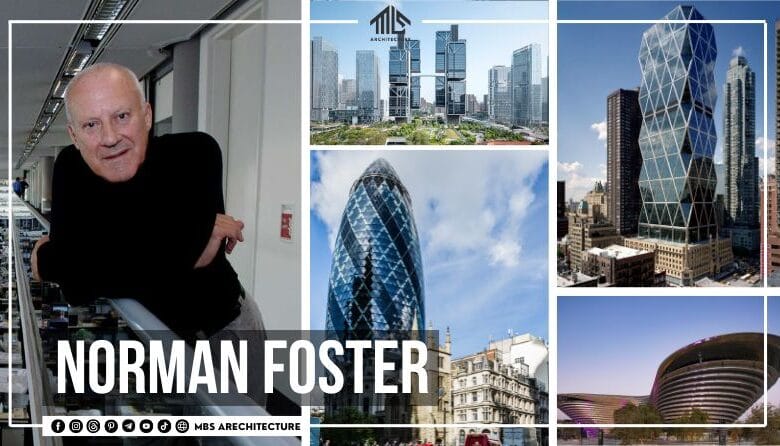
Norman Foster: A Visionary in Modern Architecture
When discussing modern architecture, Norman Foster is a name that inevitably surfaces. The British architect, born in 1935 in Manchester, has become a significant figure in contemporary architecture, influencing design globally. Through his firm Foster + Partners, Foster has transformed cities with his innovative, high-tech, and sustainable architectural projects.
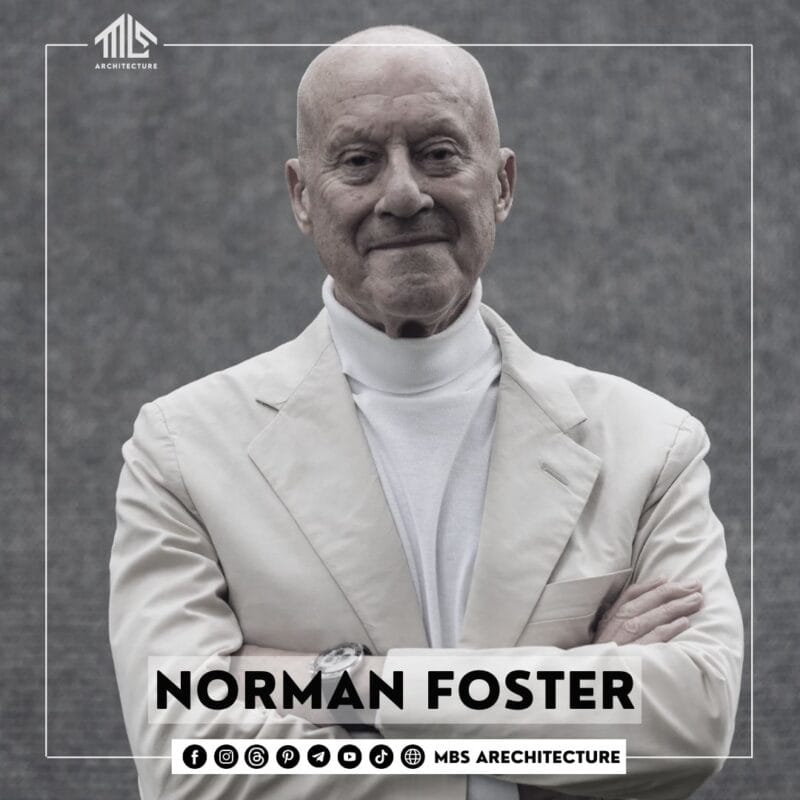
With a career spanning over five decades, Foster’s architectural style is characterized by his use of advanced technology, sustainable building methods, and sleek, futuristic designs. His approach is not just about aesthetics, but about creating functional, efficient, and environmentally conscious spaces. Norman Foster has earned several prestigious awards, including the Pritzker Architecture Prize, sometimes referred to as the “Nobel Prize of Architecture.”
This article delves into the key milestones in Foster’s career, his architectural philosophy, and the characteristics that make Norman Foster’s architecture stand out in the modern architectural world.
The Early Years of Norman Foster
Born in a working-class family, Norman Foster showed an early passion for drawing and designing. After completing his National Service with the Royal Air Force, Foster pursued his architectural studies at the University of Manchester in the mid-1950s. His time at the university exposed him to the works of leading modernist architects, such as Le Corbusier, Frank Lloyd Wright, and Mies van der Rohe, which greatly influenced his early work.
In 1961, Foster was awarded a Henry Fellowship to attend Yale University, where he obtained his master’s degree in architecture. At Yale, Foster met Richard Rogers, with whom he would later form a close professional relationship. The exposure to modernist theories and mentors like Paul Rudolph refined his approach to architecture, focusing on creating flexible and technologically advanced spaces.
Upon his return to the UK, Foster co-founded Team 4 in 1963 with Richard Rogers, Su Brumwell, and Wendy Cheesman. Team 4 quickly became known for their high-tech, modernist architecture, with the Reliance Controls Factory (1967) as one of their earliest projects.
The Rise of Foster + Partners: A High-Tech Approach

In 1967, Norman Foster established his own firm, Foster Associates (later renamed Foster + Partners). From the outset, the firm embraced technological innovation and a high-tech approach to architecture. Foster’s belief in the use of modern materials like steel, glass, and concrete became a signature feature of his designs.
The Willis Faber & Dumas Headquarters in Ipswich (1975) was one of the first major projects of Foster + Partners. The building was revolutionary in its design, featuring a glass façade that blurred the line between the building’s interior and exterior. It also incorporated an open-plan office layout, which was groundbreaking at the time. This project laid the foundation for Foster’s architectural philosophy of integrating sustainability with high-tech design.
Another early project, the Sainsbury Centre for Visual Arts (1978) at the University of East Anglia, is an excellent example of Foster’s ability to merge technology and flexibility. The building’s modular design allowed it to serve multiple purposes, and its innovative use of materials like aluminum and glass made it a landmark in high-tech architecture.
Sustainability in Norman Foster’s Architecture
Sustainable architecture is one of the pillars of Foster’s work. Long before sustainability became a global focus, Foster’s architectural philosophy prioritized energy efficiency and minimizing the environmental footprint of his buildings. Foster’s work shows a deep understanding of how architecture can serve both functional and environmental needs.
A prime example of Norman Foster’s sustainable architecture is Apple Park, completed in 2017 in Cupertino, California. The building, also known as “The Spaceship,” is one of the most energy-efficient corporate buildings in the world. Apple Park spans 175 acres and features extensive solar panels, natural ventilation, and recycled building materials. The structure reflects Foster’s commitment to sustainable design, integrating renewable energy sources while maintaining a sleek and modern aesthetic.
Another groundbreaking sustainable project is Masdar City in Abu Dhabi, a carbon-neutral city designed by Foster. The city relies on solar energy and sustainable cooling systems to combat the extreme desert climate. Masdar City exemplifies Foster’s vision of integrating traditional architectural elements, like narrow streets and shaded pathways, with modern technology to create an energy-efficient urban environment.
Sustainable Materials and Techniques
Foster’s approach to sustainability is rooted in his use of cutting-edge materials and techniques. The adoption of glass and steel allows for open, flexible spaces that maximize natural light. However, Foster also incorporates sustainable building materials such as recycled aluminum, timber, and locally sourced stone into his designs. These materials not only enhance the aesthetics of his buildings but also minimize their environmental impact.
Moreover, Foster integrates green roofs and rainwater collection systems into many of his designs, further reducing the energy and water consumption of his projects. His emphasis on passive design strategies, such as optimizing buildings for natural ventilation and insulation, showcases his forward-thinking approach to environmental sustainability.
Norman Foster’s Vision of Smart Cities
In addition to creating individual sustainable structures, Norman Foster has also contributed to the development of smart cities. Masdar City in Abu Dhabi is a perfect example of how Foster’s vision extends beyond individual buildings to urban planning on a city-wide scale.
Smart cities, according to Foster, are designed with an emphasis on connectivity, efficiency, and sustainability. By using cutting-edge technologies such as the Internet of Things (IoT), Foster’s designs for urban environments focus on improving the quality of life for city dwellers while minimizing the environmental footprint. This vision is particularly evident in Foster’s work in urban transit hubs, where he combines modern design with innovative transportation solutions that enhance mobility while reducing congestion and pollution.
Global Influence of Norman Foster’s Architecture
Norman Foster’s global influence cannot be overstated. His works have transformed cities across Europe, Asia, and North America. Foster’s projects are found in major cities such as New York, London, Beijing, and Hong Kong, where his modernist, high-tech architecture reshapes cityscapes and challenges conventional design.
The HSBC Tower in Hong Kong (1985), for example, set a new standard for high-rise buildings in Asia. Its innovative use of natural ventilation, suspended floors, and modular construction techniques made it one of the first skyscrapers to prioritize energy efficiency. Foster’s global reach ensures that his architectural philosophy of blending technology and sustainability remains a dominant force in contemporary architecture.
Another global influence is his Millennium Bridge in London, which has become a symbol of modern London architecture and urban regeneration. The bridge represents Foster’s ability to create structures that are not only functional but also culturally significant. It is a popular tourist attraction and a prime example of how Foster’s architecture blends seamlessly into the existing urban fabric.
Norman Foster’s Architectural Philosophy
Foster’s architectural philosophy centers on improving the quality of life through innovative, functional, and sustainable design. His buildings prioritize user experience, often incorporating open, flexible spaces that can adapt to changing needs. Foster integrates advanced technology into his designs, enabling his buildings to be more efficient, lighter, and better suited to modern urban environments.
One of the hallmarks of Foster’s architecture is his emphasis on reducing environmental impact. By incorporating sustainable practices, such as natural ventilation, renewable energy, and recycled materials, Foster ensures that his projects not only meet the needs of today but also help preserve the environment for future generations.
His vision for flexible, adaptive spaces ensures that his buildings remain relevant and useful, long after they are completed. This concept of “adaptive architecture” is a key principle in Foster’s work, where he envisions spaces that evolve with the changing needs of society.
Signature Projects of Norman Foster
1. The Gherkin (30 St Mary Axe), London
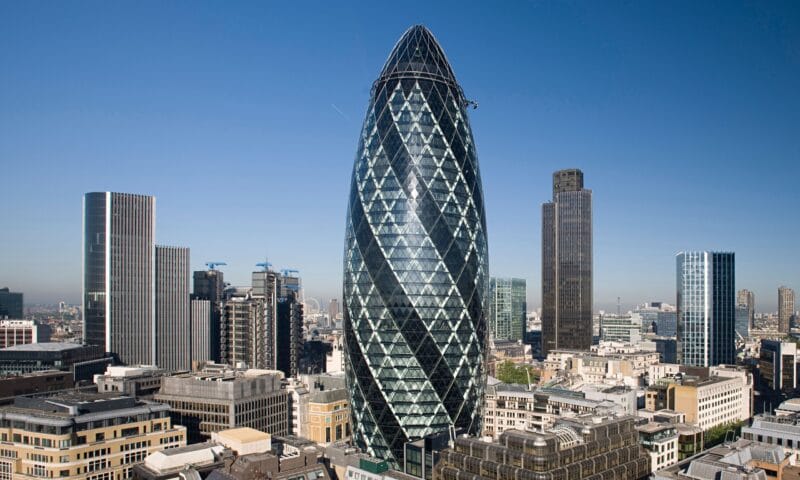
Perhaps one of the most recognizable buildings in London, 30 St Mary Axe, commonly known as The Gherkin, was completed in 2003. The tower’s sleek, spiral design maximizes natural ventilation and light, reducing energy consumption by nearly 50% compared to conventional office buildings. The Gherkin is a hallmark of Foster’s high-tech architecture and demonstrates how innovation can meet sustainability in urban environments.
2. The Reichstag Dome, Berlin
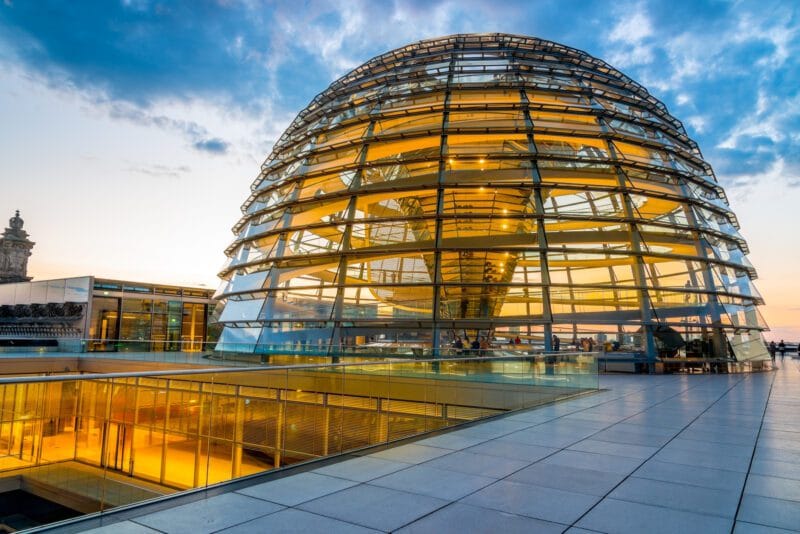
In 1999, Foster completed the redesign of the Reichstag Building in Berlin, which serves as the home of the German Parliament. Foster retained the historic façade of the building but added a modern glass dome. The dome symbolizes government transparency and channels natural light into the parliamentary chamber, reducing the need for artificial lighting. This project demonstrates Foster’s ability to balance modernity with historical preservation, a recurring theme in his work.
3. Millau Viaduct, France
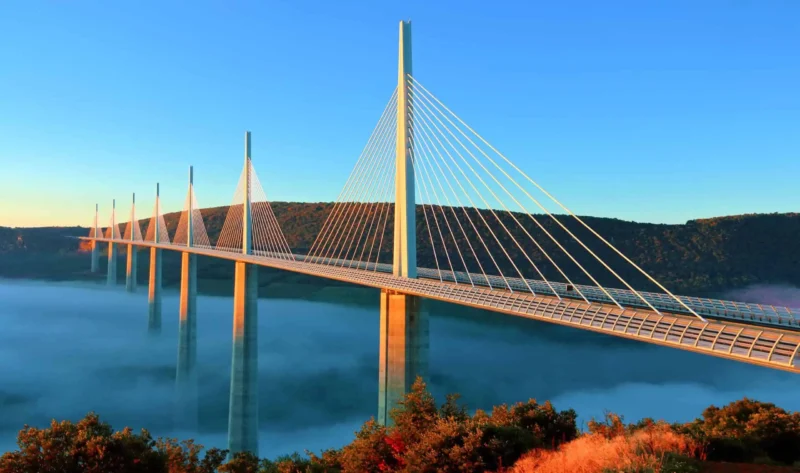
The Millau Viaduct, completed in 2004, is the world’s tallest bridge and another iconic project in Foster’s portfolio. Spanning the Tarn Valley in southern France, the viaduct is an engineering marvel, showcasing Foster’s mastery in integrating architecture with natural landscapes. The elegant lines and use of lightweight materials reflect Foster’s philosophy of combining functionality with beauty.
4. Hong Kong International Airport
Opened in 1998, Hong Kong International Airport is one of the busiest airports globally and a prime example of Foster’s expertise in infrastructure design. Built on a man-made island, the terminal’s design allows natural light to flood the interior spaces, reducing energy consumption. The airport’s user-friendly layout, combined with Foster’s attention to sustainability, makes this project one of the most significant achievements in Norman Foster’s career.
Books by Norman Foster
Norman Foster is not only an architect but also a prolific writer. He has authored several books that provide insights into his architectural journey and philosophy.
1. “Foster 40“
This book looks at Foster’s first 40 years in architecture and showcases his most influential works. The book offers an in-depth look at his design processes and the innovations that have defined Foster’s architecture.
2. “Norman Foster: A Global Architecture“
In this book, Foster explores the global impact of his projects, offering detailed accounts of his most famous international works. The book provides a comprehensive understanding of how Foster’s designs have shaped cities around the world.
3. “On Foster… Foster On“
This reflective work discusses Foster’s career, his evolving philosophy, and his thoughts on the future of sustainable architecture. It offers valuable insights into how he combines technology, innovation, and environmental responsibility in his projects.
Frequently Asked Questions (FAQ)
1. What is the philosophy of Norman Foster?
Foster’s philosophy revolves around creating functional, sustainable, and adaptable spaces that enhance the quality of life. His work integrates advanced technology, sustainability, and a commitment to reducing environmental impact.
2. What are the characteristics of Norman Foster architecture?
Foster’s architecture is characterized by sleek, high-tech designs, innovative use of materials like glass and steel, and a strong focus on sustainability and functionality. His buildings often feature natural light, flexible spaces, and cutting-edge technology.
3. When did Norman Foster design his first building?
Foster’s first major project was the Willis Faber & Dumas Headquarters, completed in 1975. This building set the stage for his future work in modern, sustainable architecture.
4. What was Zaha Hadid’s job with Norman Foster?
Zaha Hadid worked briefly with Foster early in her career while both were students at the Architectural Association in London. Although they did not collaborate on any major projects, Hadid was influenced by Foster’s high-tech architectural style.
References
- “Norman Foster: A Life in Architecture” by Deyan Sudjic
- “Foster 40” by Norman Foster
- “On Foster… Foster On” by Norman Foster
- Foster + Partners Official Website

